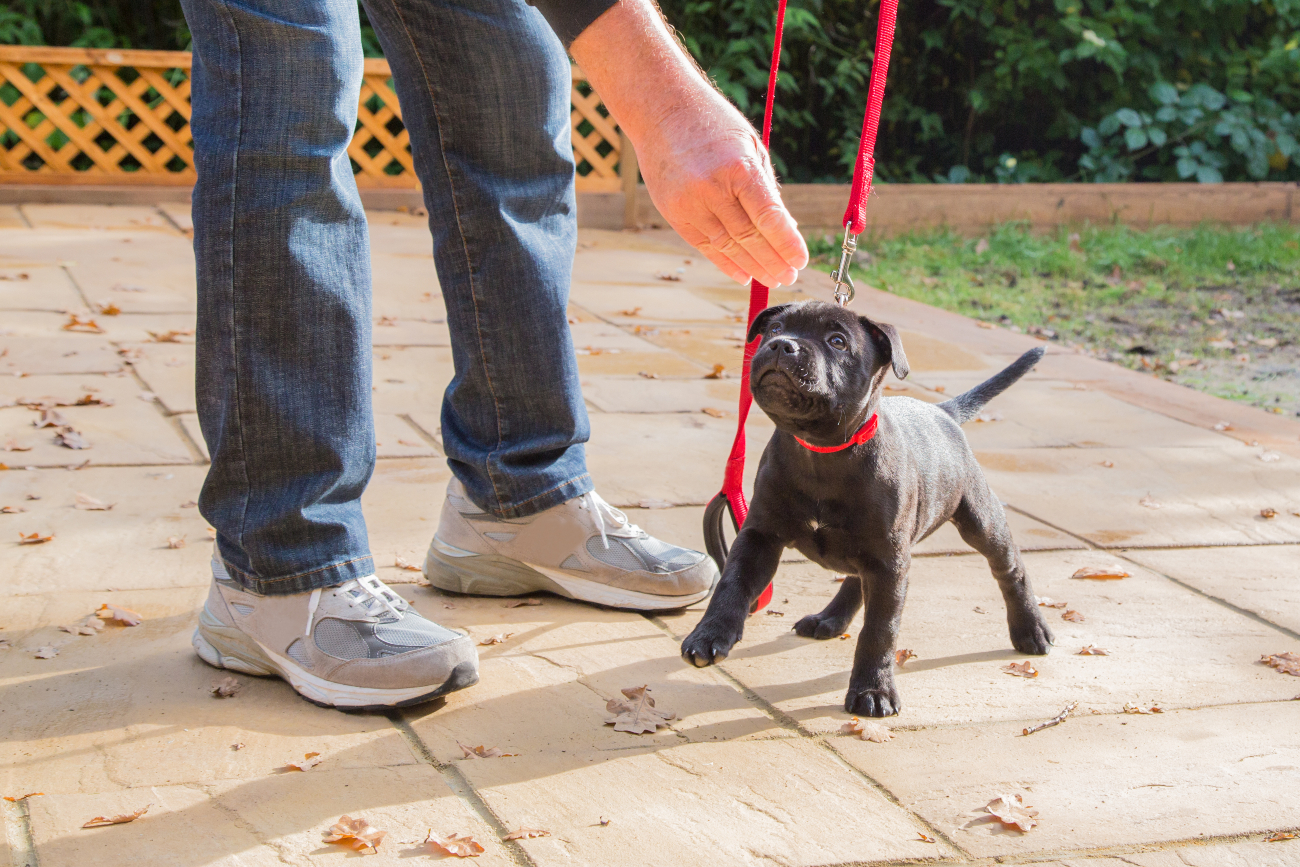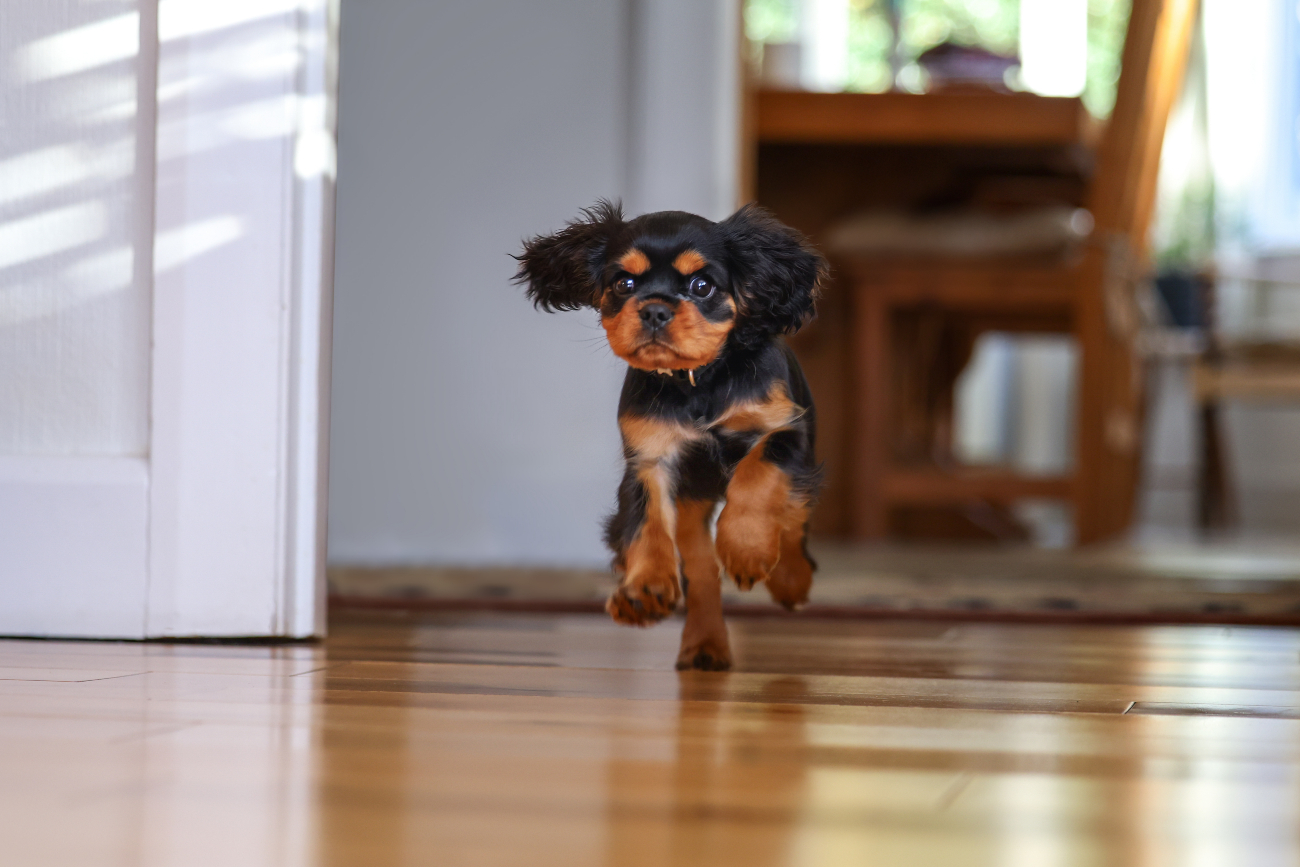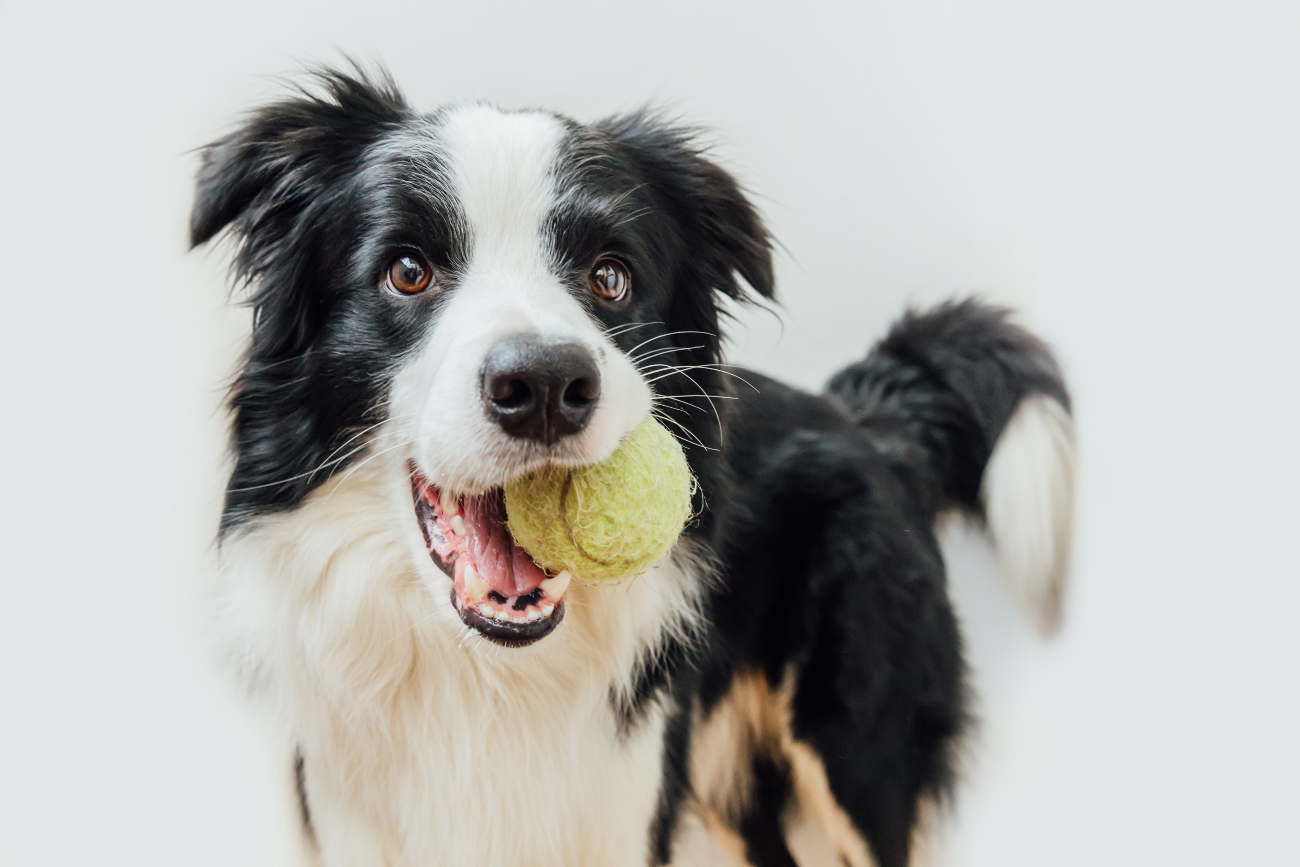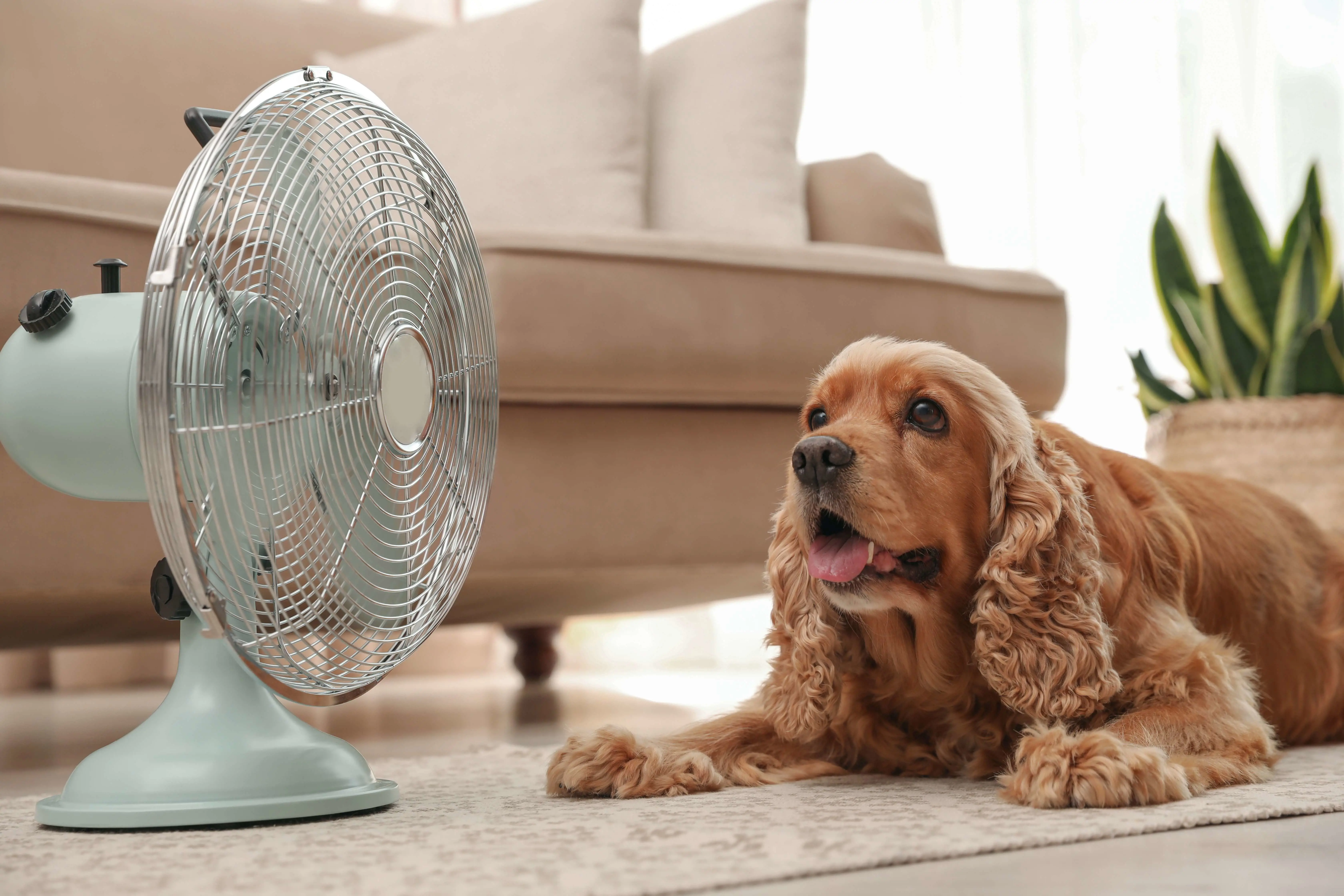How to teach a puppy to walk on a leash
23rd April, 2024

If you've ever wondered how to teach a puppy to walk on a leash, you're in the right place. Walking your furry friend should be an enjoyable experience for both of you.
By following some simple steps and being patient, you can help train your puppy to learn how to successfully walk on a loose lead or leash like a pro. Let's explore the process together to make those first walks a breeze!
Key takeaways
- Select walking gear based on puppy's size, temperament, and training needs
- Get the puppy comfortable with walking gear through positive interactions and playtime
- Teach basic leash manners using positive reinforcement techniques
- Start indoor leash training before transitioning to outdoor walks for a smooth progression
Why is lead training important?
Have you ever wondered, why is lead training important for your four-legged friend? Well, the answer is simple. It's all about safety, control, and mutual respect. Lead training is a crucial aspect of dog ownership that can significantly enhance your relationship with your pet while ensuring it remains safe and well-behaved.
When a dog is well trained on the lead, it means you have more control over your pet in different situations. Whether you are walking on a bustling city street or hiking on a peaceful trail, a lead-trained dog will remain by your side, undistracted by other dogs, people, or potential hazards. This not only ensures your dog’s safety but also provides peace of mind for you as an owner.
Moreover, lead training is a wonderful way to establish mutual respect between you and your dog. It helps set boundaries and teaches your dog to look to you for guidance in unfamiliar situations. It's not about restricting their freedom, but about teaching them to respect their boundaries for their safety.
Choosing the right leash and collar
When choosing the right leash and collar for your puppy, consider their size, temperament, and training needs. The leash material plays a crucial role in your puppy's comfort and safety during walks. Opt for a lightweight yet sturdy material like nylon for most dogs and small breeds, while larger dogs may benefit from stronger options like leather or chain leashes.
Collar size is equally important to ensure a snug fit without being too tight or loose. Measure your puppy's neck and adjust the collar accordingly to prevent them from slipping out or feeling constricted.
To ensure the leash and collar fit correctly, make necessary adjustments as your puppy grows. An ill-fitting leash or collar can lead to discomfort and may hinder effective training.
When it comes to training techniques, positive reinforcement is key:
- Use treats and praise to encourage good behaviour while walking your young dog on a leash.
- Stay calm, patient and consistent, reinforcing desired actions to help your puppy learn and enjoy their walks.
At what age should you start leash training a puppy?
The answer is as soon as possible! Puppies can start their leash training as early as 8 weeks old. This is a perfect time to introduce your furry friend to a leash, as it's the age when they are most receptive to new experiences. Leash training at an early age can help your puppy grow into a well-behaved and disciplined dog.
Starting early doesn't mean it will be easy though. Puppies are full of energy and curiosity, so patience is going to be your best friend during these initial stages. Remember to keep the training sessions short and fun, focusing on positive reinforcement rather than punishment. The goal isn’t just to get your puppy to tolerate the leash but to associate it with happy experiences.
Training a puppy dog to walk well on a leash isn’t just about teaching them manners; for many dogs, it’s also about keeping them safe. A well-trained dog is less likely to run away or get into dangerous situations. So, grab a leash and harness, get some treats, and start this exciting journey with your little pup today!
Getting your puppy comfortable with the gear
To ease your puppy into walking on a harness and leash comfortably, start by gradually introducing the gear during positive interactions and playtime. This will help your furry friend associate the leash and collar with fun experiences, making the transition smoother. Here's how you can get your puppy to feel comfortable with the gear:
- Positive reinforcement: Reward your puppy with treats and praise when they show curiosity towards the leash and collar.
- Short introductions: Begin by letting your puppy sniff and explore the gear for short periods to prevent overwhelming them.
- Playful associations: Incorporate the gear into playtime activities to create positive associations.
- Gradual progression: Slowly work up to putting on the leash and collar, ensuring your puppy remains relaxed and happy throughout the process.
Teaching basic leash manners
Begin by reinforcing positive behaviours such as walking calmly and staying by your side when on the leash. Using leash training techniques like the 'red light, green light' method can help.
When your puppy pulls on the leash, stop walking (red light). When they walk nicely by your side and pull less, continue to walk forward (green light). This teaches them that pulling gets them nowhere, but walking nicely is rewarding.
Positive reinforcement methods are key in teaching leash manners. Reward your puppy with treats, praise, or toys when they exhibit good behaviour on the leash. This will motivate them to repeat the desired actions. Remember to be consistent in your training and patient with your puppy as they learn.
Another useful technique is to change directions frequently during walks. This keeps your puppy engaged and focused on you. Stop when the dog starts pulling or yanking on the leash as this can create negative associations with walking on the leash.
By implementing these leash training techniques and positive reinforcement methods during long walks, you can help your puppy develop good leash manners.
Practising walking on a leash indoors
Practise walking on a leash indoors by using short sessions to gradually introduce your puppy to the feeling of being on a leash. Start in a quiet room free from other distractions to help your puppy focus on the training.
Here are some tips to make indoor leash training effective:
- Leash training games: Engage your puppy in fun activities while on the leash indoors, like playing fetch or practising simple commands. This helps associate the leash with positive experiences.
- Leash handling techniques: Practise holding the leash correctly, keeping the loose leash but maintaining control. Use gentle movements to guide your puppy without causing discomfort.
- Indoor distractions: Introduce mild distractions like toys or treats to teach your puppy to stay focused on you while walking on the leash indoors.
- Indoor obstacles: Create a safe indoor obstacle course to help your puppy learn to navigate different environments while on a leash.
Transitioning to outdoor walks will be smoother once your puppy is comfortable walking on a leash indoors.
Gradually transitioning to outdoor walks
As your puppy becomes more comfortable walking on a leash indoors, it's time to gradually introduce them to outdoor walks to further enhance their leash training.
Outdoor exploration is an exciting next step for your puppy's leash training progressions. The new sights, sounds, and smells outside will provide a new and enriching experience for your furry friend.
To help you navigate this transition smoothly, here is a guide with a few steps to assist you:
| Outdoor walk | Transition guide tips |
| Start in a familiar are | Begin outdoor walks in a familiar and quiet environment to reduce distractions |
| Short and positive sessions | Keep initial outdoor walks brief and positive to build your puppy's confidence |
| Rewarding good behaviour | Continue to reward good leash manners in new environments and the great outdoors to reinforce positive behaviour |
Conclusion

Now that you've mastered the basics of leash training, it's time to hit the streets with your furry friend! Remember, practice makes perfect, so keep up the good work and soon your puppy will be walking on a lead or a leash like a pro.
Puppy insurance can provide coverage for veterinary costs in case your puppy gets injured or falls ill. For a puppy insurance quote for your furry friend, you can get a quote through our website. If you would like to talk to one of our puppy insurance specialists, you can get in touch with us on 0330 102 5748.
Happy trails ahead!
Frequently asked questions
How do I handle my puppy's fear or anxiety towards walking on a leash?
When handling your puppy's fear or anxiety towards walking on a leash, start with gentle exposure and positive reinforcement.
Consistent leash training practice and behaviour modification techniques can help build confidence and create a positive association with leash walks.
What should I do if my puppy constantly pulls on the leash during walks?
When your puppy or dog pulls back on the leash during walks, try different leash training techniques. Use positive reinforcement techniques like treats and praise to encourage good behaviour. Consistency is key in teaching your puppy proper leash manners.
Is it okay to use treats or rewards to encourage my puppy to walk on a leash?
Yes, it's okay to use treats or rewards to encourage your puppy's attention during leash training. Positive reinforcement is a great way to teach good behaviour. Stay consistent in your training techniques to see progress in your puppy's leash-walking skills.
How often should I take my puppy for a walk on a leash?
To establish good leash manners, consider your puppy's age. For effective leash training, aim for short walks multiple times daily. Gradually increase the duration as your pup grows. Be patient and consistent in addressing outdoor distractions.
Are there any specific safety tips I should keep in mind while walking my puppy on a leash?
When a puppy is walking on a leash, always prioritise safety precautions. Stay alert, choose a secure leash, avoid busy roads, and watch for signs of discomfort. Leash training is crucial for both your safety and your pup's well-being.
What is the fastest way to leash train a dog?
Leash training is an essential part of dog parenting but getting your furry friend to behave on a leash can sometimes be a challenge. So, what is the fastest way to leash train a dog? It's all about positive reinforcement and consistency. Start indoors, in a familiar environment with minimal distractions. Let your dog get used to the feel of the leash and collar before you start training in earnest.
Use treats or toys as rewards for good behaviour, rewarding them when they walk nicely beside you without tugging or pulling. Consistently stopping when they pull and only moving forward when the leash is slack can help teach them that pulling gets them nowhere. This process may require patience, but it’s the quickest way to get results.
It's also the most important thing to make the experience enjoyable for your pooch. Make sure the collar or harness is comfortable and that the leash is the right length for control without causing discomfort.
Also, remember to keep training sessions short and sweet so your dog learns and doesn't get overwhelmed. By keeping a positive attitude and staying consistent with training, you'll have your pup walking perfectly on a leash in no time!
Helpful Pages
Recent Posts
Pet Insurance Quote
- 98% claims paid *
- Claims paid directly to vets
- 24/7 vet video consultations
- Interest free monthly payments




